The very edges of the rural, West Wales county of Pembrokeshire are fringed with sandy beaches ripe for running on – on four legs or two.
I’m convinced something shifts in a dog’s mind when they hit the soft sand of a long beach. My dog Arty hears and smells the seaside before he sees it and his body changes almost immediately – he begins to pull on the lead, as if being drawn to the shore by some invisible, inaudible-to-me siren.
When we’re there, sand between our feet and paws respectively, and he’s finally liberated from the inhibition of the lead, he runs – but not his usual run. He has a racehorse style sprint on him. He runs with total and absolute abandon in every direction possible. It is quite something to watch, and if you’re a dog owner yourself, you’ll understand the unique combination of wonderment and joy you get from witnessing such ecstasy in action. That’s why I loved the Pembrokeshire coast.
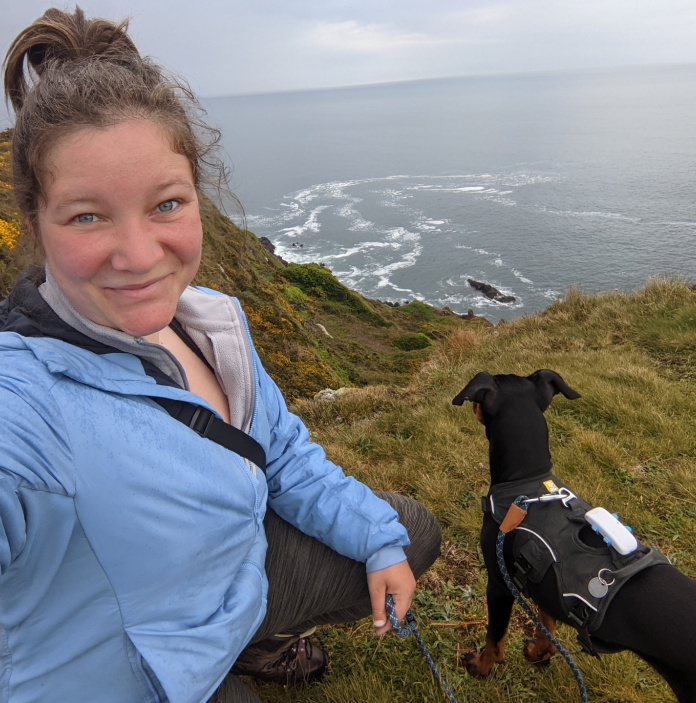
Our first taste of it all was in Tenby, where a large sweep of fine golden sand runs along the town’s southern coastline. Overlooked by a row of handsome townhouses atop a cliff – the most enviable addresses in Tenby, no doubt – and with views out to Caldey Island, it’s the kind of beach you could spend hours on.
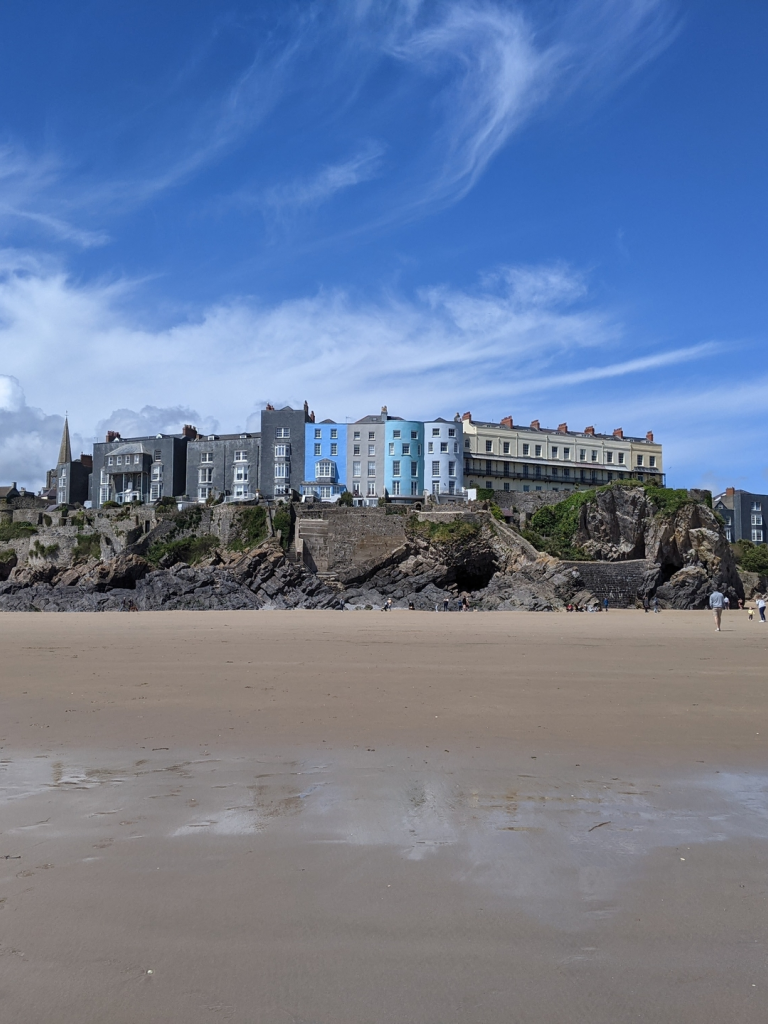
Our visit was only brief – a mere leg-stretching break on our odyssey through the Pembrokeshire Coast National Park – but it was here that Arty found his stride on the Welsh shores, while I re-energised with an ninety-nine from the coolest off-roading ice cream van I’ve ever seen.
Had we stuck around longer, we could have taken the boat out to Caldey Island to visit the historic monastery, or even tried agility at the family- and dog-friendly Heatherton World of Activities. The sands of Freshwater East were calling though, and so we drove on.
Freshwater East is a good 900-metre-long sandy stretch, well sheltered by cliffs either side and fringed with rocky caves to explore. It isn’t as well known as the blockbuster sands of Barafundle Bay or Broad Haven. For dogs, though, it’s a dream. Especially early in the morning.
Just like we humans gather in pubs after work, dogs gather on Freshwater East before the day begins. Balls fly along the shoreline, labradors bounce among the surf and all manner of sniffing, chasing and barking ensues. Owners become redundant while the dogs get their morning social fix.
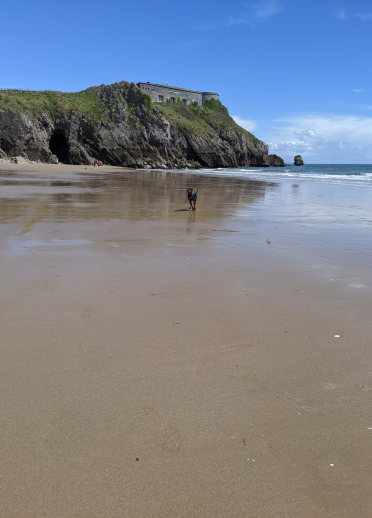
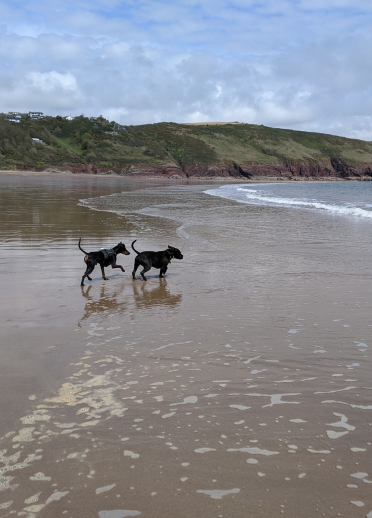
The glorious thing about Pembrokeshire is its glut of dog-friendly beaches. From the rockpools of Manorbier to the dunes of Freshwater West, you’re never more than a few miles as the tennis ball flies from the nearest dog-welcoming cove or bay. But there’s plenty beyond the beaches, too. At Manorbier, we wandered the ancient walls of a Norman castle, climbing its steps to get ocean views from the Hall Keep. In Pembroke we explored the town’s medieval fortress before nipping into the Wisebuys deli to pick up local fruit, vegetables, beers and Welsh cakes.
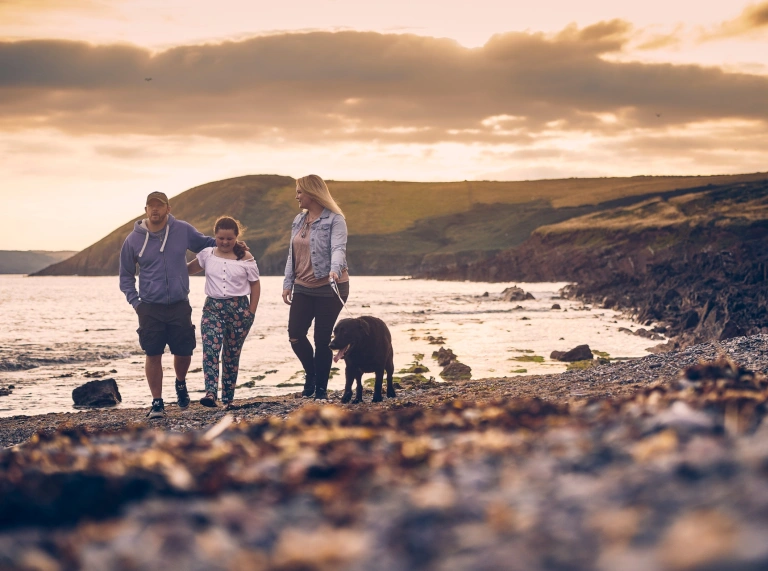
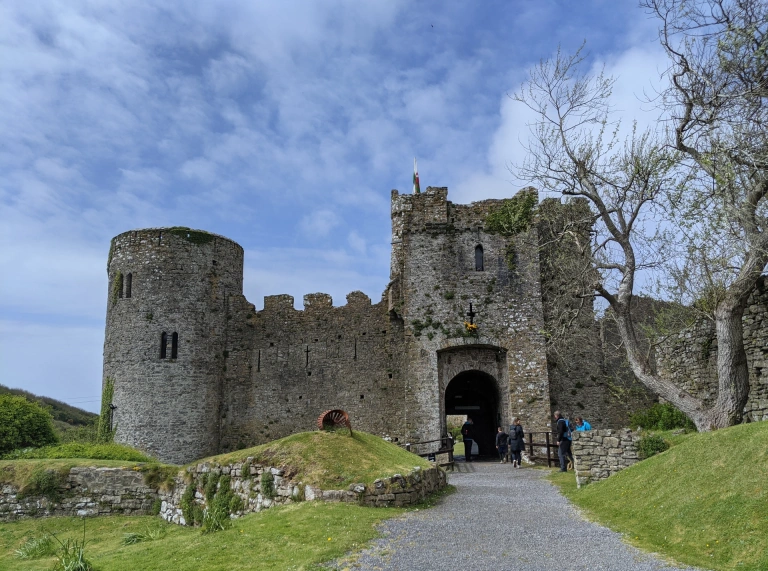
It was out at sea that our biggest adventure occurred, though. Beyond the southwest tip of Pembrokeshire, at the southern end of St Bride’s Bay, lies an island haven: Skomer. Just short of three square kilometres (1.8-sq-miles), this small isle packs in a staggering amount of wildlife, not to mention thousands of spectacular wildflowers in spring and summer, from bluebells to pink campion.
The highlight, though, is its bird life. This remote island attracts some 6,000 puffins between April and August, who come here to mate, lay their eggs in burrows in the ground, and rear their young before heading south again. It might not sound like the ideal place to bring a dog – especially one as fond of birds as mine – but from the water is where you’ll get the best view of the colony’s vastness.
Read more about visiting Skomer. Dogs aren't allowed on the island itself to protect the wildlife.

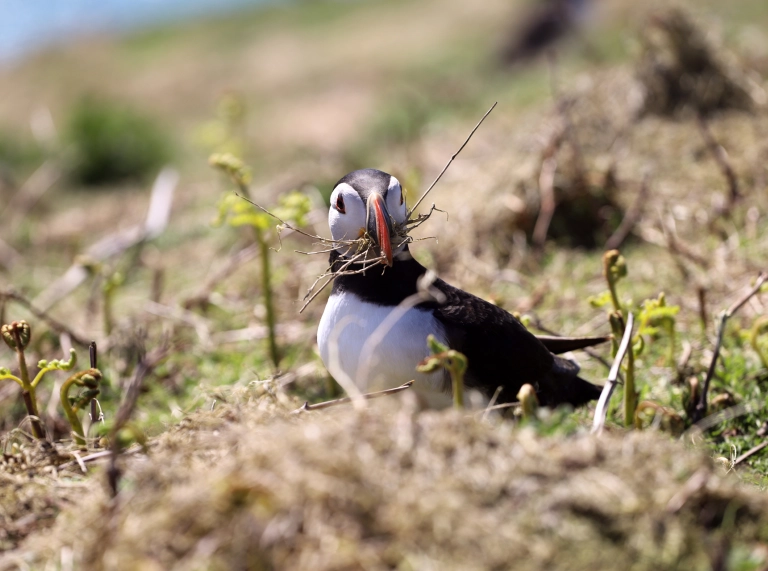
Speeding away from St Justinians Lifeboat Station, just outside the UK’s smallest city, St Davids, we tracked porpoises in the swell of the ocean before arriving at Skomer. 'This is rare,' explained our Voyages of Discovery guide, as a Manx Shearwater cut across the sky above the bow of our RIB. 'They’re usually out at sea all day, so to see one this close to land before nightfall is a real treat.'
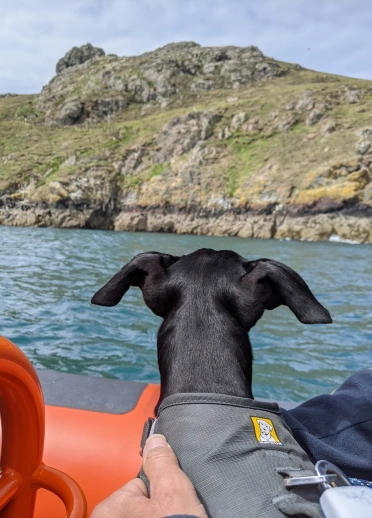
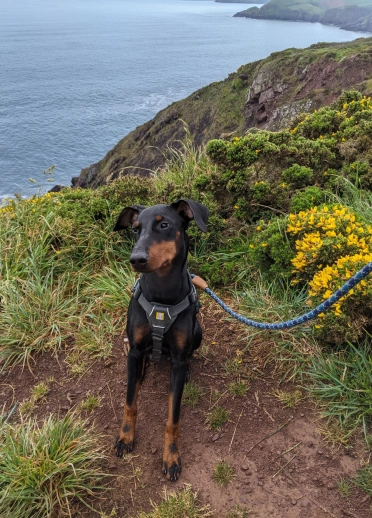
We slowed to a near standstill at the base of a dramatic cliff on Skomer Island, and all around us bobbed the orange-beaked birds we’d all come to see. From the cliffs to the water’s surface to the sky above our heads, puffins were everywhere.
Around the other side of the island where a few rocky outcrops made for perfect lounging spots, a small colony of grey seals lolloped about in the surf. Their heads popped up as they heard our engine and a few young pups slid into the water to come and examine our vessel. 'These are the ocean’s dog,' announced our guide. 'They’re from the same family of animals.' I looked at Arty – the least water-loving creature that ever lived who was, by this time, wrapped up in a blanket for fear of a little ocean spray – and figured there must be millions of years of evolution between him and those plump creatures on the rocks.






